You can use something like below to deploy 2 VM's and Create a new active directory forest in one and in other you can just add it to domain and promote both as Domain Controllers:
Availability Set:
Main.tf:
provider "azurerm" {
features{}
}
## Import exisiting resource group
## Use this data source to access information about an existing Resource Group
data "azurerm_resource_group" "resource_group" {
name = "ansumantest"
}
## Import exisiting virtual network
## Use this data source to access information about an existing Virtual Network.
data "azurerm_virtual_network" "virtual_network" {
resource_group_name = data.azurerm_resource_group.resource_group.name
name = "ansuman-vnet"
}
## Import exisiting subnet with in a virtual network
## Use this data source to access information about an existing Subnet within a Virtual Network.
data "azurerm_subnet" "subnet" {
name = "default"
virtual_network_name = data.azurerm_virtual_network.virtual_network.name
resource_group_name = data.azurerm_resource_group.resource_group.name
}
## Configure Availiablility set
resource "azurerm_availability_set" "availability_set" {
name = "ansuman-avset"
resource_group_name = data.azurerm_resource_group.resource_group.name
location = data.azurerm_virtual_network.virtual_network.location
platform_fault_domain_count = 2
platform_update_domain_count = 2
managed = true
}
## Create 2 Public IP
resource "azurerm_public_ip" "public_ip" {
count = 2
name = "ansuman-pip-${count.index}"
resource_group_name = data.azurerm_resource_group.resource_group.name
location = data.azurerm_virtual_network.virtual_network.location
allocation_method = "Dynamic"
}
#Static Private address to be used by the server each
variable "PrivateIP" {
default=["10.0.0.5","10.0.0.6"]
}
## Create network interface for VM with adding the static Private IP's in the DNS server list
resource "azurerm_network_interface" "vm_nic" {
count = 2
name = "vm-${count.index}-nic"
resource_group_name = data.azurerm_resource_group.resource_group.name
location = data.azurerm_virtual_network.virtual_network.location
dns_servers = var.PrivateIP
ip_configuration {
name = "internal"
subnet_id = data.azurerm_subnet.subnet.id
private_ip_address_allocation = "Static"
private_ip_address = var.PrivateIP[count.index]
public_ip_address_id = azurerm_public_ip.public_ip[count.index].id
}
}
## Create 2 Windows Virtual Machine
resource "azurerm_windows_virtual_machine" "virtual_machine" {
count = 2
name = "AZDC-${count.index}"
resource_group_name = data.azurerm_resource_group.resource_group.name
location = data.azurerm_virtual_network.virtual_network.location
size = "Standard_F8s_v2"
admin_username = "ansuman"
admin_password = "Password@1234"
network_interface_ids = [
azurerm_network_interface.vm_nic[count.index].id
]
availability_set_id = azurerm_availability_set.availability_set.id
os_disk {
caching = "ReadWrite"
storage_account_type = "Standard_LRS"
}
source_image_reference {
publisher = "MicrosoftWindowsServer"
offer = "WindowsServer"
sku = "2019-Datacenter"
version = "latest"
}
depends_on = [
azurerm_network_interface.vm_nic
]
}
#Powershell commands to run the ADDS in the VM's
locals {
import_command = "Import-Module ADDSDeployment"
password_command = "$password = ConvertTo-SecureString ${var.admin_password} -AsPlainText -Force"
credentials_command = "$credentials = new-object -typename System.Management.Automation.PSCredential -argumentlist ${var.domainAdminUsername},$password"
install_ad_command = "Add-WindowsFeature -name ad-domain-services,dns -IncludeManagementTools"
configure_ad_command = "Install-ADDSForest -CreateDnsDelegation:$false -DomainMode Win2012R2 -DomainName ${var.active_directory_domain} -DomainNetbiosName ${var.active_directory_netbios_name} -ForestMode Win2012R2 -InstallDns:$true -SafeModeAdministratorPassword $password -Force:$true"
promote_adds_command = "Install-ADDSDomainController -DomainName ${var.active_directory_domain} -InstallDns -Credential $credentials -SafeModeAdministratorPassword $password -Force:$true"
shutdown_command = "shutdown -r -t 10"
exit_code_hack = "exit 0"
powershell_command = "${local.import_command}; ${local.password_command}; ${local.install_ad_command}; ${local.configure_ad_command}; ${local.shutdown_command}; ${local.exit_code_hack}"
powershell_promote_command = "${local.password_command};${local.credentials_command}; ${local.install_ad_command}; ${local.promote_adds_command}; ${local.shutdown_command}; ${local.exit_code_hack}"
}
#creating a forest and promoting the Primary server as a DC
resource "azurerm_virtual_machine_extension" "create-active-directory-forest" {
name = "create-active-directory-forest"
virtual_machine_id = azurerm_windows_virtual_machine.virtual_machine[0].id
publisher = "Microsoft.Compute"
type = "CustomScriptExtension"
type_handler_version = "1.9"
settings = <<SETTINGS
{
"commandToExecute": "powershell.exe -Command \"${local.powershell_command}\""
}
SETTINGS
}
# Adding Secondary server to the Domain and promoting it as DC
resource "azurerm_virtual_machine_extension" "promote-to-domain-controller" {
name = "promote-to-domain-controller"
virtual_machine_id = azurerm_windows_virtual_machine.virtual_machine[1].id
publisher = "Microsoft.Compute"
type = "CustomScriptExtension"
type_handler_version = "1.9"
settings = <<SETTINGS
{
"commandToExecute": "powershell.exe -Command \"${local.powershell_promote_command}\""
}
SETTINGS
depends_on = [
azurerm_virtual_machine_extension.create-active-directory-forest
]
}
Variable.tf:
variable "active_directory_domain" {
description = "The name of the Active Directory domain, for example `consoto.local`"
default = "contoso.local"
}
variable "admin_password" {
description = "The password associated with the local administrator account on the virtual machine"
default = "Password@1234"
}
variable "active_directory_netbios_name" {
description = "The netbios name of the Active Directory domain, for example `consoto`"
default = "Contoso"
}
variable "domainAdminUsername" {
description = "The local administrator account on the Domain"
default = "ansuman@contoso.local"
}
Output:





Availability Zone:
main.tf
provider "azurerm" {
features{}
}
## Import exisiting resource group
## Use this data source to access information about an existing Resource Group
data "azurerm_resource_group" "resource_group" {
name = "ansumantest"
}
## Import exisiting virtual network
## Use this data source to access information about an existing Virtual Network.
data "azurerm_virtual_network" "virtual_network" {
resource_group_name = data.azurerm_resource_group.resource_group.name
name = "ansuman-vnet"
}
## Import exisiting subnet with in a virtual network
## Use this data source to access information about an existing Subnet within a Virtual Network.
data "azurerm_subnet" "subnet" {
name = "default"
virtual_network_name = data.azurerm_virtual_network.virtual_network.name
resource_group_name = data.azurerm_resource_group.resource_group.name
}
##availabilty zones
variable "Zone" {
default=["1","2"]
}
resource "azurerm_network_security_group" "example" {
name = "ansuman-nsg"
location = data.azurerm_virtual_network.virtual_network.location
resource_group_name = data.azurerm_resource_group.resource_group.name
security_rule {
name = "test123"
priority = 100
direction = "Inbound"
access = "Allow"
protocol = "Tcp"
source_port_range = "*"
destination_port_range = "*"
source_address_prefix = "*"
destination_address_prefix = "*"
}
}
resource "azurerm_subnet_network_security_group_association" "example" {
subnet_id = data.azurerm_subnet.subnet.id
network_security_group_id = azurerm_network_security_group.example.id
}
## Create 2 Public IP
resource "azurerm_public_ip" "public_ip" {
count = 2
name = "ansuman-pip-${count.index}"
sku = "Standard"
availability_zone = var.Zone[count.index]
resource_group_name = data.azurerm_resource_group.resource_group.name
location = data.azurerm_virtual_network.virtual_network.location
allocation_method = "Static"
}
#Static Private address to be used by the server each
variable "PrivateIP" {
default=["10.0.0.5","10.0.0.6"]
}
## Create network interface for VM with adding the static Private IP's in the DNS server list
resource "azurerm_network_interface" "vm_nic" {
count = 2
name = "vm-${count.index}-nic"
resource_group_name = data.azurerm_resource_group.resource_group.name
location = data.azurerm_virtual_network.virtual_network.location
dns_servers = var.PrivateIP
ip_configuration {
name = "internal"
subnet_id = data.azurerm_subnet.subnet.id
private_ip_address_allocation = "Static"
private_ip_address = var.PrivateIP[count.index]
public_ip_address_id = azurerm_public_ip.public_ip[count.index].id
}
}
## Create 2 Windows Virtual Machine
resource "azurerm_windows_virtual_machine" "virtual_machine" {
count = 2
name = "AZDC-${count.index}"
resource_group_name = data.azurerm_resource_group.resource_group.name
location = data.azurerm_virtual_network.virtual_network.location
size = "Standard_F8s_v2"
admin_username = "ansuman"
admin_password = "Password@1234"
zone = var.Zone[count.index]
network_interface_ids = [
azurerm_network_interface.vm_nic[count.index].id
]
os_disk {
caching = "ReadWrite"
storage_account_type = "Standard_LRS"
}
source_image_reference {
publisher = "MicrosoftWindowsServer"
offer = "WindowsServer"
sku = "2019-Datacenter"
version = "latest"
}
depends_on = [
azurerm_network_interface.vm_nic
]
}
#Powershell commands to run the ADDS in the VM's
locals {
import_command = "Import-Module ADDSDeployment"
password_command = "$password = ConvertTo-SecureString ${var.admin_password} -AsPlainText -Force"
credentials_command = "$credentials = new-object -typename System.Management.Automation.PSCredential -argumentlist ${var.domainAdminUsername},$password"
install_ad_command = "Add-WindowsFeature -name ad-domain-services,dns -IncludeManagementTools"
configure_ad_command = "Install-ADDSForest -CreateDnsDelegation:$false -DomainMode Win2012R2 -DomainName ${var.active_directory_domain} -DomainNetbiosName ${var.active_directory_netbios_name} -ForestMode Win2012R2 -InstallDns:$true -SafeModeAdministratorPassword $password -Force:$true"
promote_adds_command = "Install-ADDSDomainController -DomainName ${var.active_directory_domain} -InstallDns -Credential $credentials -SafeModeAdministratorPassword $password -Force:$true"
shutdown_command = "shutdown -r -t 10"
exit_code_hack = "exit 0"
powershell_command = "${local.import_command}; ${local.password_command}; ${local.install_ad_command}; ${local.configure_ad_command}; ${local.shutdown_command}; ${local.exit_code_hack}"
powershell_promote_command = "${local.password_command};${local.credentials_command}; ${local.install_ad_command}; ${local.promote_adds_command}; ${local.shutdown_command}; ${local.exit_code_hack}"
}
#creating a forest and promoting the Primary server as a DC
resource "azurerm_virtual_machine_extension" "create-active-directory-forest" {
name = "create-active-directory-forest"
virtual_machine_id = azurerm_windows_virtual_machine.virtual_machine[0].id
publisher = "Microsoft.Compute"
type = "CustomScriptExtension"
type_handler_version = "1.9"
settings = <<SETTINGS
{
"commandToExecute": "powershell.exe -Command \"${local.powershell_command}\""
}
SETTINGS
}
# Adding Secondary server to the Domain and promoting it as DC
resource "azurerm_virtual_machine_extension" "promote-to-domain-controller" {
name = "promote-to-domain-controller"
virtual_machine_id = azurerm_windows_virtual_machine.virtual_machine[1].id
publisher = "Microsoft.Compute"
type = "CustomScriptExtension"
type_handler_version = "1.9"
settings = <<SETTINGS
{
"commandToExecute": "powershell.exe -Command \"${local.powershell_promote_command}\""
}
SETTINGS
depends_on = [
azurerm_virtual_machine_extension.create-active-directory-forest
]
}
Note: Availability Set and Availability Zones cannot be configured together. It can be either or , If you want to use Zone then Set cannot be used. You can also refer this
Microsoft Community Blog for more details.
Output:



For testing login to the secondary server using your domain admin username i.e. in my case ansuman@consto.local and password.









